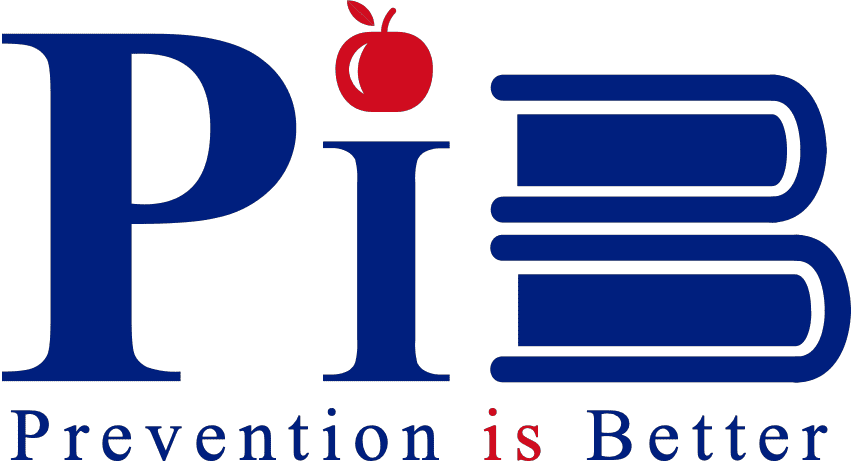Why is prevention important for adolescents? (Article series 3 of 7)

Note: This is the third in a series of articles on prevention.
Why is prevention important for adolescents?
The best addiction prevention strategy is not necessarily the one that aims at eradicating the problem of addiction among adults. What many adults have become in their adulthood is more likely to be the product of the lifestyle in their youth. Implementing alcohol or drug prevention strategies to tackle the adulthood addiction problem is a good prevention strategy, but not the very best move when the main aim is to fully eradicate the problem of addiction in our world today. Adolescent substance consumption not only multiplies the risk of addiction but also has Thorough health, financial, and social costs. It is directly linked to the top three leading causes of death among adolescents, homicides, suicides, and accidents, and is implicated in poor academic grades, school dropout, cognitive impairment, unsafe sex, unintended pregnancies, mental health disorder, violence, criminality, unsafe driving, and many other potentially fatal medical conditions. The more frequent and intense the use of addictive substances among young people, the greater the consequences. The use of more than one substance only compounds the risk of negative outcomes (Drug Free, 2020)
For this reason and the reasons listed below, the best Addiction prevention strategy is the one that focuses on the earlier stages of life.
1) Risk prevention: According to research on substance use prevention, individuals who started smoking marijuana at an early age have an eight times higher chance of developing marijuana use disorder than those who started it at age 21 (Drug Free, 2020). Also, an individual who drinks alcohol at an early age is five times more likely to develop alcohol use disorder than those who begin at age 21 (Drug Free, 2020). When we compare these data, we know where the greater risk lies, which is within the range of adolescence age. Therefore, while prevention could be achieved at any age, for an addiction prevention strategy to be completely successful, it must aim at preventing the adolescent from danger to accomplish the total cleansing of the potential of substance and alcohol addiction both present and future (Drug Free, 2020). Early intervention on drugs and alcohol use in adolescence can both increase protective factors and reduce risk factors before they lead to damage later in life (Drug Free, 2020).
2) Protecting the hope of a nation: According to Cornellà-Font et al. (2020), the excessive consumption of alcohol and illegal drug use among adolescents is a major concern in many countries. Consuming alcohol and illegal drugs are related to risky behaviours, like reckless driving, unsafe sexual practices, and violence (Cornellà-Font et al., 2020). The youth are often called the leaders of tomorrow and the hope of the future. However, research suggests a rising trend in substance use among young people, therefore, implementing alcohol and drug prevention measures targeting substance abuse at a young age is not only a means of safeguarding the present and future well-being of a nation but also nurturing the potential of future leaders, preventing risky behaviours that can hinder them from achieving greatness(Cornellà-Font et al., 2020). Failure to prevent the younger ones from the problem of addiction early could compromise the future health of a nation.
3) Period of rapid development: The stage of Adolescence represents crucial periods during which substance use behaviours can become established (Kirsch & Lippard, 2022). According to research, adolescence marks a period of rapid development that includes physical transformation and development within the brain (Kirsch & Lippard, 2022). While greater brain plasticity during this period may increase vulnerability to the effects of stress and substance use, it also makes it a critical window of opportunity for intervention (Kirsch & Lippard, 2022). Early intervention at an adolescent age is very crucial before the problem of addiction proceeds to adulthood stages. At this stage, addiction could have become a norm or a coping mechanism for life stressors, such as heavy bills, housing costs, social exclusion, and many more (Stockings et al., 2016).
Summary:
Early adolescent addiction prevention intervention is very important because research made it known that adolescents are much more likely to develop drug and alcohol-related problems. The adolescent age is where the addiction risk lies the most, and a period of rapid development in the brain which makes it a critical window of opportunity for intervention. Therefore, in order to completely cleanse society from the danger of drugs and alcohol addictions, it is crucial to centre prevention strategies where it is most effective and transforming. In the next ARTICLE, we will talk about the different prevention models and how they can be useful in preventing addiction to different substances..
References
Cornellà-Font, M., Viñas-Poch, F., Juárez-López, J. R., and Malo-Cerrato, S. (2020). Risk of Addiction: Its Prevalence in Adolescence and its Relationship with Security of Attachment and Self-concept. Clínica y Salud, 31(1), 21 - 25. https://doi.org/10.5093/clysa2020a1
Drug Free (2020). Rethinking Substance Use Prevention: An Earlier and Broader Approach. https://cdn-01.drugfree.org/web/prod/wp-content/uploads/2022/01/19201050/Rethinking-Substance-Use-Prevention-Final.pdf?__hstc=4358502.c76f7ce6be8a5f118c054b6782d3b78f.1712178619110.1712178619110.1712178619110.1&__hssc=4358502.2.1712178619111&__hsfp=1323558929&_gl=1*eoekso*_ga*NDA4ODQyNDM4LjE3MTIxNzg2MTU.*_ga_ECZGQ0GWSZ*MTcxMjE3ODYxNS4xLjEuMTcxMjE3OTcwOC41Ni4wLjA .
Kirsch, D. E., & Lippard, E. T. C. (2022). Early life stress and substance use disorders: The critical role of adolescent substance use. Pharmacology Biochemistry and Behavior, 215, 173360. https://doi.org/10.1016/j.pbb.2022.173360
Stockings, E., Hall, W. D., Lynskey, M., Morley, K. I., Reavley, N., Strang, J., Patton, G., & Degenhardt, L. (2016). Prevention, early intervention, harm reduction, and treatment of substance use in young people. The Lancet Psychiatry, 3(3), 280–296. https://doi.org/10.1016/s2215-0366(16)00002-x
Acknowledgements
Special thanks to the students of Redeemer University, Ancaster, Ontario for their assistance in preparing these articles.
